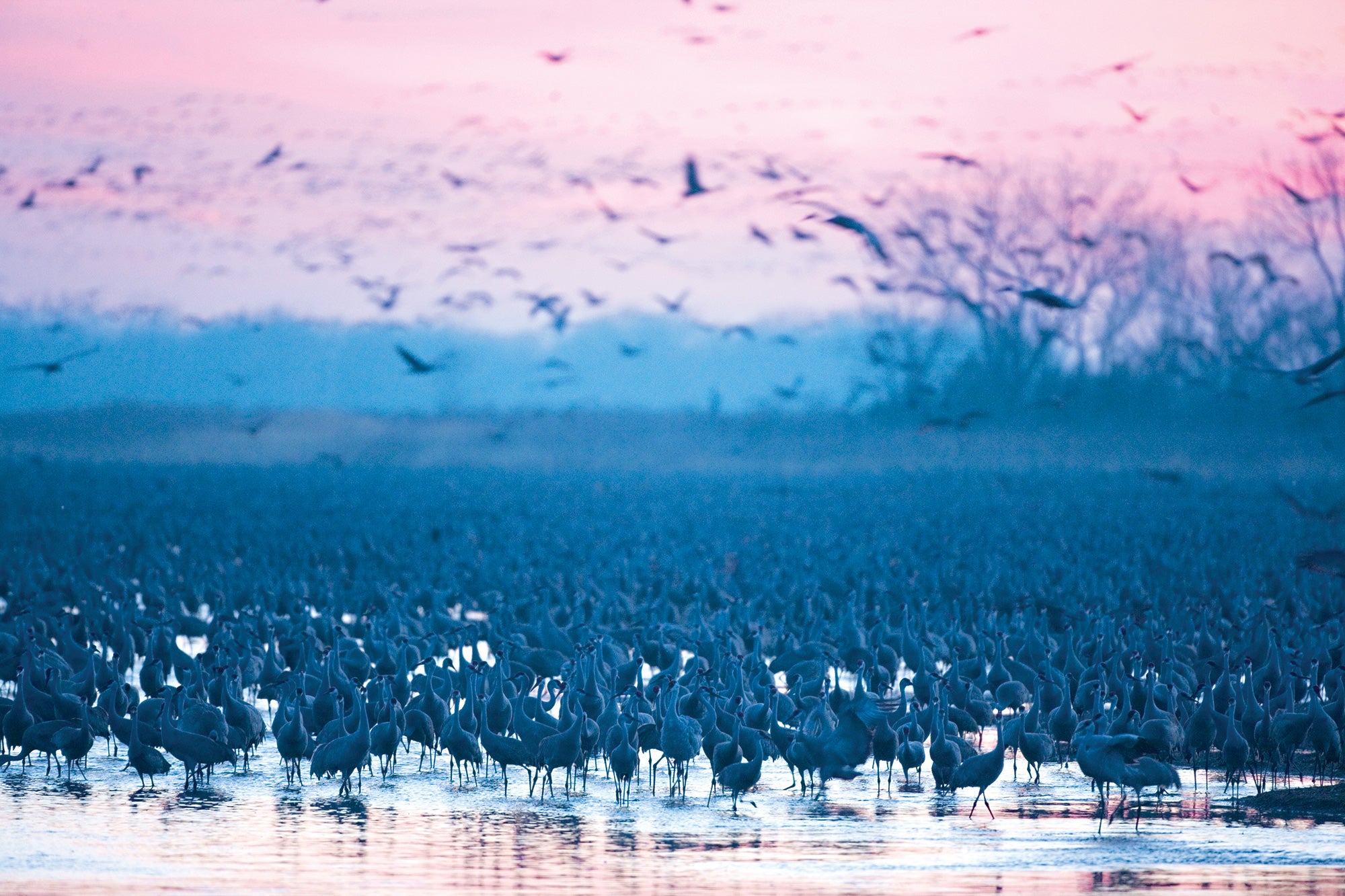Camp With 10,000 Sandhill Cranes in Nebraska

'Photo by Jim Lo Scalzo/Aurora Photos'
The door shuts, then all is quiet.
I empty my pack in the corner of the small, one-room shelter. I unroll my sleeping bag, fluff the down, and arrange it on a mat laid on the wooden floor. I practice quietly opening and shutting the window coverings. Any sudden movement could scatter the one-of-a-kind flock that I’m here to see.
Just 15 minutes ago, my camping partner and I threw our packs into a Rowe Sanctuary volunteer’s truck for a ride past the native prairie to this crude hut in the park’s wetlands. I’m a backpacker, and though the plywood shelter has no amenities, it felt like cheating to catch a ride to my backcountry camp. But tromping through the preserve could disturb the wildlife, so we accepted the ride. Now, forbidden to leave the shelter, I can’t help but feel a little trapped.
It’s a novel feeling when so much of hiking is about the freedom, but when I peek out the window at dusk, I see a cloud of black dots growing on the horizon. They’re here.
Every spring, half a million sandhill cranes—some 80 percent of the world’s population—stop over on the Platte River, a portion of which is protected in Nebraska’s Rowe Sanctuary. They come from Mexico, Texas, and the Southwest, meeting here in Nebraska to feast on waste grain in the nearby crop fields and roost on the Platte before heading to Canada, Alaska, and Siberia to breed. The Rowe Sanctuary celebrates their migration with a program that lets people view it without disturbing the cranes—which is why I’m not allowed to leave my shelter.
As the flocks encroach on my own sanctuary, their raucous, bugle-like calls shatter the silence. The sky becomes so thick with cranes it makes the twilight even darker. They catch thermals and coast in circles around my shelter, each one making several passes before finding just the right piece of watery real estate and landing in the Platte with a small splash. Some perch on sandbars that poke out of the river like thrones, while others strut through the shallows, outstretching their wings and pumping their heads in search of mates. There are so many of the white, gray, and brown birds that in an hour’s time I can no longer tell where the shore ends and the water begins. I stand by my window, mesmerized, until it’s too dark to make out shapes anymore.
The next morning, the birds are still squawking and socializing in the Platte. My pick-up can’t get me until they clear out to the cornfields—a sudden, seemingly random explosion of feathers that happens two hours later—so I’m on house arrest. But I don’t mind.
DO IT Reserve a cabin (called a “photo blind”) and a shuttle online ($225 for one blind; sleeps two). Each blind has a latrine pail (remember, you can’t leave). Peak crane season is March 16 to April 7.